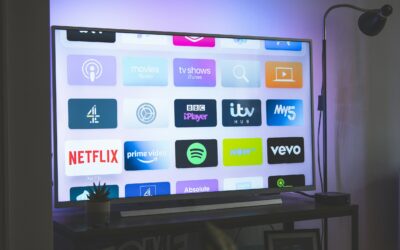Purchases With Purpose: How to Make Intentional Money Decisions in a World of Algorithms
Last month, I was helping my nine-year-old daughter’s Girl Scout troop plan their camping trip budget (in pursuit of their financial literacy badge!). We talked about how many boxes of cookies they would need to sell to fund the trip, including buying the essentials, like food and renting the campground, along with the nice-to-haves, like games and books.
As we were talking about the difference between wants and needs, I remembered an article about New Year’s resolutions that I had read a few days prior. The article examined the increasing trend of spending money on non-essential items, especially with the proliferation of shopping on social media platforms like TikTok and Instagram.
Social media has fundamentally changed how we shop. Not only do sophisticated algorithms anticipate exactly what we’re likely to buy, but shopping functionality makes it so you never even need to leave the app to spend money.
And it works. Consider Bankrate’s recent research, which indicates that over a 12 month time period, U.S adults spent a staggering $71 billion on impulse buys based on what they saw on social media. And over half – 57% – of those impulse buyers regretted at least one of their purchases.
I call it the cost of convenience. Purchases that used to require a trip to the mall now take just one click, usually late at night when our willpower is at its lowest. And what I often find is that a low level of effort directly correlates to a low level of satisfaction. I don’t know about you, but I don’t feel any better, happier, or more fulfilled post-purchase.
So as we kick off 2025, I’m suggesting we all try something different. Not a complete ban on social media shopping (let’s be realistic), but a more mindful approach to what has become a mindless and expensive addiction.
Here’s what’s working for me, and might work for you too:
The 48-Hour Rule: Whenever I feel the urge to buy something on social media, I screenshot it instead of clicking through. If I still want it 48 hours later, then I can consider buying it.
Removing Your Credit Card: Think about the difference between clicking “buy now” when you want something versus having to physically get your credit card and enter all of your information. Removing your card from your social media accounts and digital wallet creates a natural friction that can curb spending.
Dedicated Shopping Saturdays: I’ve started saving all potential online purchases for Saturday mornings when I’m fresh, clear-headed, and can really think about whether I need another pair of black boots (I don’t). This simple rule has probably saved me thousands already.
The “Fun Money” Account: I recommended that a few of my clients open a separate checking account with a debit card specifically for impulse purchases. Once the money’s gone, it’s gone until next month. No guilt, no overspending – just clear boundaries.
Understanding Your Triggers: For me, it’s usually stress or boredom that sends me down the Instagram shopping rabbit hole. Recognizing this has helped me identify when I might find myself mindlessly adding to cart, and I’ve started looking for more productive ways to work through those moments.
Resetting Your Feed: Constantly being marketed to is, frankly, exhausting – so I started unfollowing accounts that make me feel like I need to buy something to improve my life.
Possibly the most important shift has been stopping to ask myself one simple question before any purchase: “Will this matter to me in a month?” Usually, the answer is no.
I’m not suggesting we all become minimalists who never buy anything fun. That’s not realistic or even desirable for most of us. But I do believe there’s a middle ground between complete abstinence and mindless consumption. It’s about making intentional choices that align with what we actually value, not what an algorithm tells us we want.
As I watched my daughter’s Girl Scouts troop carefully plan their camping budget, I realized they were naturally doing what many of us adults struggle with: distinguishing between genuine needs and manufactured wants. Maybe it’s time we took a page from their book.
So here’s my challenge to you: Next time you feel the urge to click that “Shop Now” button, pause. Screenshot it. Wait 48 hours. You might be surprised at how many “must-haves” turn into “glad-I-didn’ts.”
This material is distributed for informational purposes only. Investment Advisory services offered through Journey Strategic Wealth, a registered investment adviser registered with the U.S. Securities and Exchange Commission (“SEC”). The views expressed are for informational purposes only and do not take into account any individual’s personal, financial, or tax considerations. Opinions expressed are subject to change without notice and are not intended as investment advice. Past performance is no guarantee of future results. Please see Journey Strategic Wealth’s Form ADV Part 2A and Form CRS for additional information.























